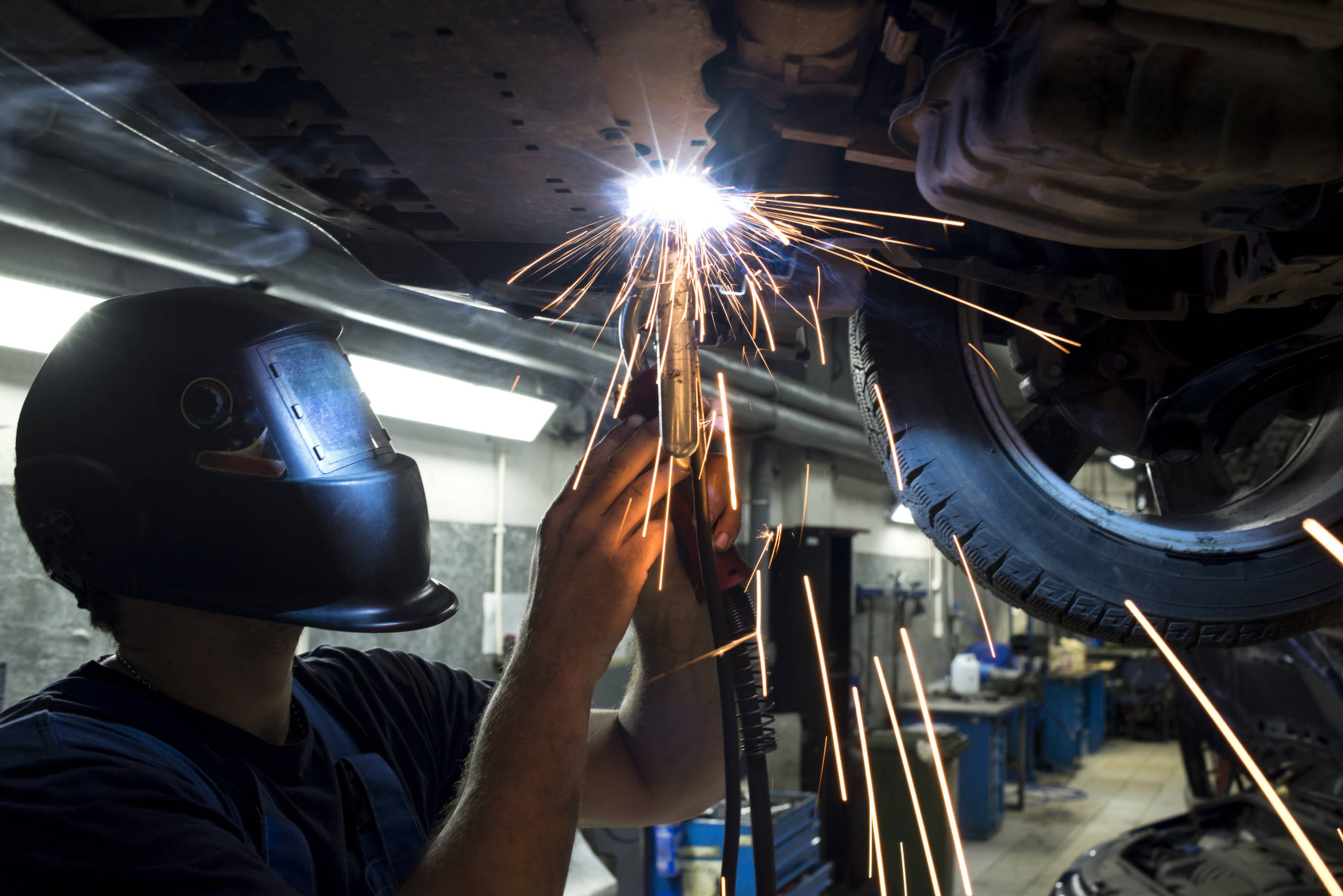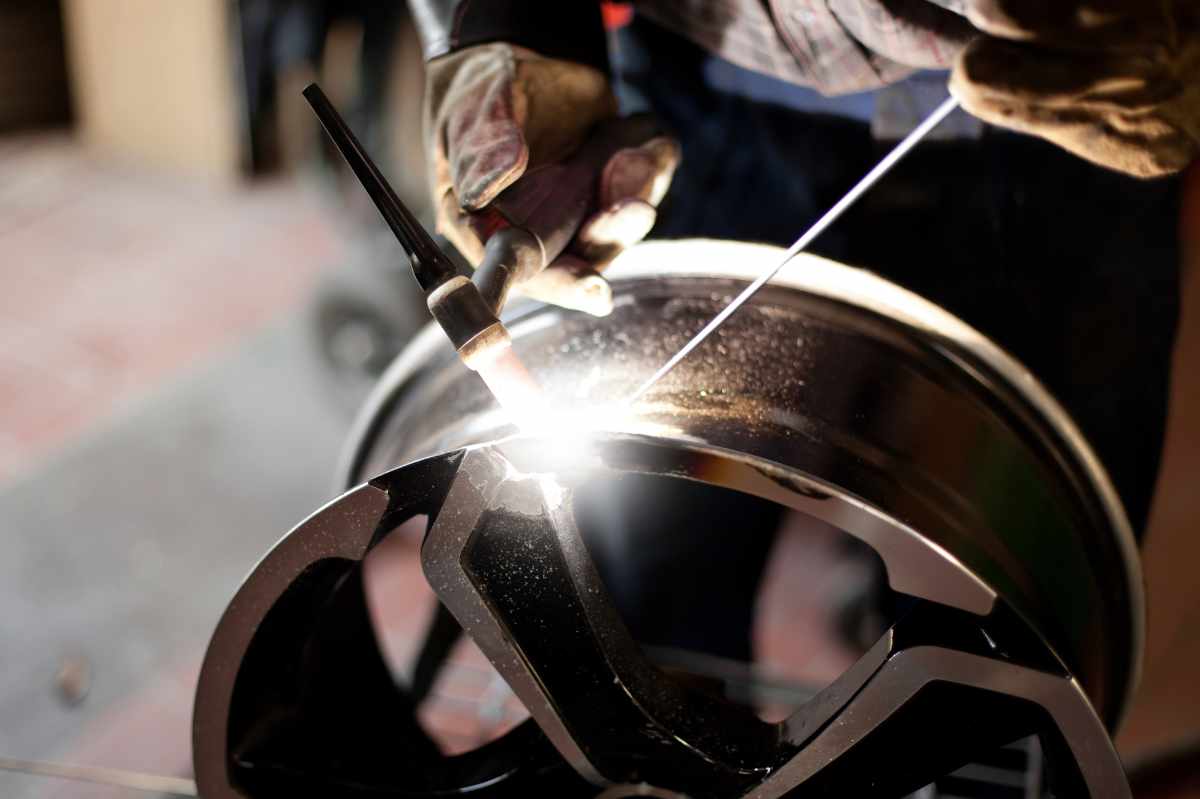Common Welding Fixing Issues and Just How to Address Them Efficiently
Welding repairs usually come across a series of issues that can jeopardize the integrity of the end product. Typical issues include poor penetration, porosity, and misalignment, to name a few. Each defect provides special difficulties that call for particular approaches for resolution. Recognizing these issues is crucial for welders aiming to improve their outcomes and abilities. This conversation will discover these usual welding repair service problems and reliable approaches to address them.
Inadequate Penetration
Insufficient penetration happens when the weld steel stops working to completely fuse with the base product, causing weak joints and potential structural failures. This concern commonly stems from not enough heat input, inaccurate electrode angle, or improper welding speed. Welders may encounter insufficient infiltration as a result of a mistake of the needed criteria for a specific product thickness or type. In addition, contamination on the base material's surface area can hinder reliable bonding, intensifying the trouble. To address insufficient penetration, welders must assure ideal setups on their equipment and keep a clean job surface. Normal assessment of welds is suggested to identify any type of shortages early, allowing for prompt corrections and the avoidance of compromised structural integrity in welded settings up.
Porosity
Porosity is a common defect in bonded joints that materializes as little gas bubbles trapped within the weld metal. This issue can jeopardize the integrity of the weld, leading to decreased toughness and prospective failure under stress and anxiety. Montana Mobile Welding and Repair Fabrication. Porosity normally occurs from contamination, dampness, or inappropriate welding techniques, which allow gases to get away right into the molten weld swimming pool. To resolve porosity, welders should ensure appropriate surface area preparation, keep a clean workplace, and utilize ideal welding parameters. In addition, picking the right filler product and shielding gas can reduce gas entrapment. Normal assessment and testing of welds can help identify porosity early, assuring prompt corrective actions are taken, consequently protecting the quality and reliability of the bonded structure
Misalignment
Misalignment in welding can arise from various factors, consisting of improper configuration and thermal expansion. Comprehending the origin is necessary for effective resolution. Numerous correction strategies are readily available to straighten parts and assure structural integrity.
Reasons for Misalignment
Welding imbalance usually originates from a range of underlying problems that can compromise architectural stability. One key cause is incorrect fit-up of parts before welding, which can bring about voids and uneven surfaces. Variants in thermal development during the welding procedure can also cause distortion, especially if the materials being joined have various coefficients of expansion. In addition, poor fixturing and securing may fail to hold components safely in area, leading to activity during welding. Badly maintained devices, consisting of welding devices and devices, might introduce variances in the weld bead, additional adding to misalignment. Lastly, driver mistake, coming from insufficient training or experience, can also play a substantial function in developing misaligned welds.
Improvement Methods Readily Available
Dealing with misalignment properly needs a combination of restorative strategies customized to the particular problems handy. One usual approach is the use of fixtures or jigs to hold parts in the appropriate position during welding, making sure constant positioning. In addition, pre-heating the materials can aid minimize distortion and enhance fit-up. For substantial imbalance, mechanical adjustment techniques, such as utilizing hydraulic jacks or clamps, can be utilized to remedy the setting before welding. Post-weld heat therapy might additionally be essential to alleviate tensions triggered by misalignment. Careful inspection and change throughout the configuration stage can avoid imbalance concerns from becoming significant problems, promoting a smoother welding procedure and improving general structural stability.
Distortion
Distortion is an usual difficulty in welding that can emerge from numerous elements, including unequal heating & cooling. Understanding the reasons of distortion is necessary for implementing efficient avoidance techniques. Addressing this problem not only enhances architectural honesty yet additionally enhances the total high quality of the weld.
Root causes of Distortion
When based on the intense heat of welding, products commonly go through changes that can lead to distortion. This sensation primarily develops from thermal development and tightening throughout the welding procedure. As the weld location warms up, the product increases; upon air conditioning, it gets, which can produce internal anxieties. Additionally, irregular heating throughout a work surface can intensify these stress and anxieties, resulting in warping or flexing. The kind of product also plays a significant role; steels with differing thermal conductivity and coefficients of development may respond in a different way, causing unforeseeable distortions. Poor joint design and inadequate fixturing can add to misalignment throughout welding, enhancing the probability of distortion. Recognizing these causes is essential for efficient welding repair and prevention techniques.
Prevention Techniques
Efficient prevention techniques for distortion directory during welding concentrate on controlling warmth input and making certain appropriate joint layout. Maintaining a consistent warmth input aids to lessen thermal growth and tightening, which can lead to distortion. Utilizing strategies such as pre-heating the workpiece can also reduce the temperature level gradient, advertising uniform heating. Furthermore, choosing appropriate joint layouts, such as T-joints or lap joints, can enhance stability and lower anxiety focus. Executing proper fixturing to protect the workpieces in area further help in preserving alignment throughout the welding process. Staggered welding sequences can disperse warmth more evenly, protecting against localized distortion. By using these methods, welders can considerably decrease the possibility of distortion and improve the total high quality of their welds.
Cracking
Fracturing is a typical concern come across in welding fixings, typically resulting from different elements such as incorrect cooling prices, material option, or inadequate joint prep work. The event of splits can significantly endanger the honesty of the weld, bring about possible failures throughout operation. To resolve this concern, welders have to initially evaluate the source, making certain that materials are suitable and appropriately selected for the certain application. In addition, regulating the cooling price throughout the welding procedure is important; rapid air conditioning can cause stress and bring about splitting. Appropriate joint style and prep work also add to decreasing the danger. Carrying out these techniques can improve weld quality and sturdiness, inevitably reducing the likelihood of splitting in finished weldments.

Insufficient Fusion
A considerable problem in welding repair work is incomplete fusion, which takes place when the weld metal does not properly bond with the base product or previous weld passes - Montana Mobile Welding and Repair Belgrade Welding. This defect can bring about weaknesses in the joint, possibly jeopardizing the stability of the welded structure. Elements outlaw welding hoods contributing to insufficient blend include not enough heat input, incorrect welding method, and contamination of the surfaces being signed up with. To resolve this concern efficiently, welders need to guarantee proper pre-weld cleansing and surface area preparation, in addition to change their welding parameters to attain adequate penetration and blend. Normal evaluation during the welding process can additionally help determine insufficient blend early, permitting for prompt corrective actions to enhance the total quality of the weld
Overheating
While welding fixings can boost architectural stability, overheating provides a significant challenge that can result in product deterioration. Extreme warm throughout welding can alter the mechanical homes of steels, leading to reduced strength, enhanced brittleness, and warping. This sensation is specifically crucial in high-stress applications where structural integrity is extremely important. Determining overheating can entail aesthetic evaluations for staining or distortion, along with monitoring temperature level during the welding procedure. To mitigate the dangers connected with overheating, welders must utilize proper methods, such as controlling warmth input, readjusting travel speed, and using ideal filler products. In addition, applying pre- and post-weld heat therapies can help bring back product residential properties and improve the total quality of the repair work, making sure lasting Learn More Here efficiency and safety.
Regularly Asked Concerns
What Are the Usual Indications of a Welding Issue?

How Can I Evaluate My Welds for Quality?
To check welds for top quality, one can make use of aesthetic evaluations, ultrasonic screening, and radiographic approaches. Each strategy ensures architectural honesty, identifies issues, and verifies adherence to specified requirements, ultimately enhancing the dependability of the bonded joints.
What Safety Preventative Measures Should I Take While Welding?
When welding, one should prioritize safety by putting on proper individual safety devices, guaranteeing appropriate ventilation, protecting combustible materials away, maintaining a clean work space, and being mindful of environments to avoid injuries and accidents.
Can I Fix a Weld Without Redoing the Entire Joint?
Repairing a weld without renovating the whole joint is feasible, depending upon the damages (Montana Mobile Welding and Repair Fabrication). Strategies such as grinding, adding filler material, or making use of a welding process can properly deal with specific problems while protecting the surrounding framework
What Devices Are Crucial for Effective Welding Repairs?
Vital tools for reliable welding fixings consist of a welding device, cord brush, mill, protective equipment, clamps, and filler materials. Each tool plays an important role in making sure high quality and safety and security throughout the repair work process. Porosity typically arises from contamination, moisture, or inappropriate welding strategies, which permit gases to run away into the liquified weld pool. Poorly conserved equipment, consisting of welding equipments and devices, may introduce disparities in the weld bead, further adding to misalignment. When subjected to the intense warmth of welding, materials typically undergo changes that can lead to distortion. Cracking is an usual issue encountered in welding repairs, often resulting from numerous factors such as improper air conditioning prices, product selection, or inadequate joint prep work. A substantial issue in welding fixings is insufficient combination, which happens when the weld steel does not properly bond with the base material or previous weld passes.